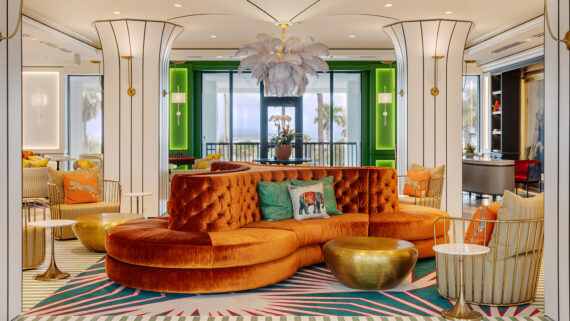
7 Questions You Didn’t Know You Had About the Rockland Breakwater
The Rockland Breakwater is more than just a scenic path extending into Penobscot Bay, Maine. Its rich history holds intriguing details. For example, did you know it’s made of the same iconic granite that was used to build the Washington Monument?
Built to protect the Rockland Harbor after severe storms ravaged the Midcoast Maine area in the 1850s, the Rockland Breakwater is a sinewy granite causeway that stands as a testament to the state’s rich maritime history. Located at the edge of Samoset Resort’s sprawling 230-acre property, it’s a beloved site for guests and locals alike, offering views of Penobscot Bay and the iconic lighthouse at its furthest end. But it’s not just the breathtaking walk that captivates visitors. There’s an incredible story behind its construction and the unique engineering that went into it.
So how much do you really know about the Rockland Breakwater’s fascinating past? Here are seven questions (with intriguing answers) that dive into the history of the man-made granite stronghold.
1. HOW LONG IS THE ROCKLAND BREAKWATER
The breakwater is just shy of a mile long, measuring 4,300 feet in length. That’s equivalent to roughly 11 football fields, making it not just the longest jetty in the state, but the second-longest in New England. What’s particularly lesser-known, however, is that the original plans called for two, much shorter breakwaters – one extending 1,900 feet from its current location at Jameson Point, the other extending 2,600 feet from South Ledge. But, engineers eventually opted for the single breakwater design as it would better protect the harbor – resulting in the impressive mile-long breakwater we know today.
2. WHEN WAS THE ROCKLAND BREAKWATER BUILT?
Construction started in 1881, but lasted a whopping 18 years. Why? There were many challenges that delayed the construction, including harsh weather conditions, engineering challenges, design changes, and just the sheer magnitude of the project. Not to mention, the project required a skilled labor force, particularly individuals familiar with stone masonry and marine construction techniques. So finding enough qualified workers to carry out the specialized tasks was often difficult, leading to delays.

3. HOW WAS THE ROCKLAND BREAKWATER BUILT?
The breakwater’s construction was an incredible feat of engineering requiring over 700,000 tons of granite, much of which was quarried from Vinalhaven Island. Moving this granite was no small task – special ships known as “stone sloops” were used to transport these massive stones across the water to Rockland Harbor.
4. WHAT’S SO SPECIAL ABOUT THE GRANITE USED TO BUILD THE BREAKWATER?
Known for its strength and durability, this granite was also used in notable structures like the Washington Monument and New York’s Cathedral of St. John the Divine. Using this granite ensured that the breakwater would stand the test of time, despite Maine’s rugged coastal environment.
5. WHEN WAS THE LIGHTHOUSE ADDED?
Although the breakwater itself was completed in 1899, it wasn’t until 1902 that the Rockland Breakwater Lighthouse was added. Its strategic position at the end of the causeway made it indispensable for guiding ships into the harbor, particularly in foggy and stormy weather conditions.

6. DOES THE ROCKLAND BREAKWATER HAVE A SLIGHT CURVE?
Yes. It’s extremely subtle, but there is a slight curve to the breakwater. The curve was introduced to help the breakwater better withstand the constant pounding of ocean waves. By dispersing the force of the water, this clever design ensures the breakwater’s longevity.
7. HOW CAN YOU VISIT THE ROCKLAND BREAKWATER LIGHTHOUSE?
The lighthouse is open to the public and can be visited by walking the breakwater – and of course, for guests of Samoset Resort, the breakwater walk is even more convenient and unique. You’ll need sturdy shoes, as the granite stones can be uneven, but the view from the end of the breakwater – complete with the lighthouse and sweeping vistas of the bay – is well worth the walk.





